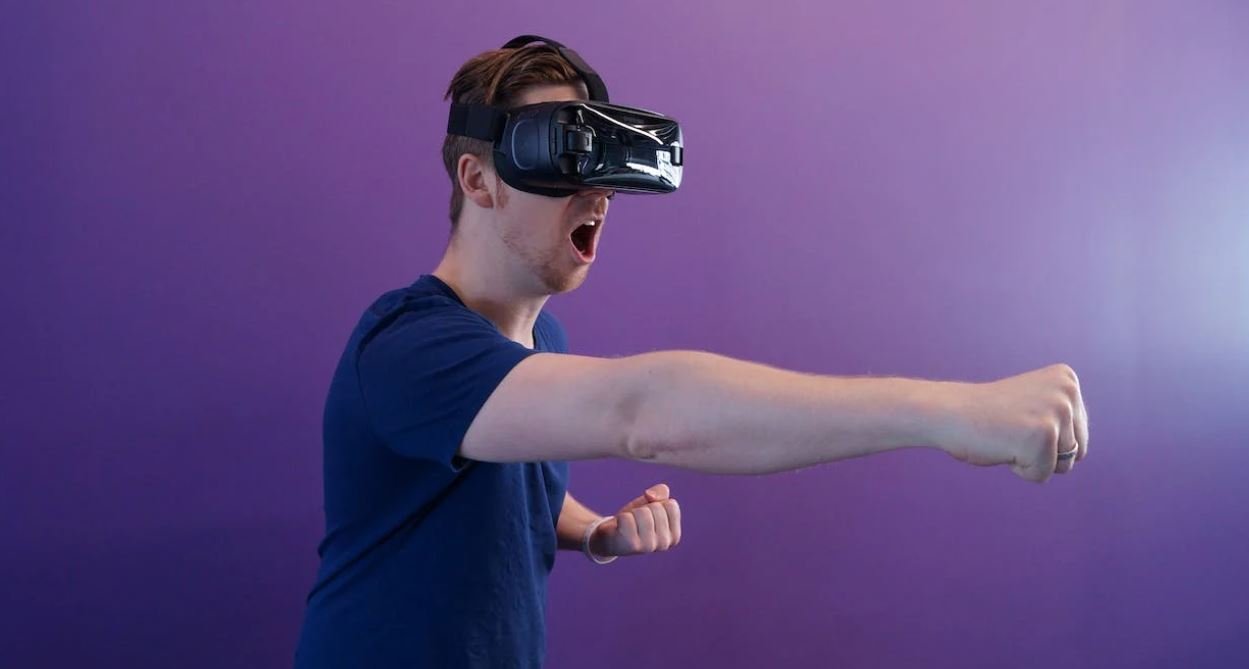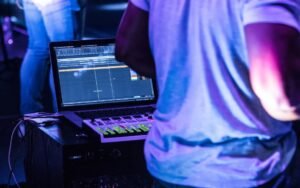Train AI Voice to Sing
Artificial Intelligence (AI) has come a long way in recent years, and one fascinating application is training AI to sing. By utilizing deep learning techniques and a vast amount of music data, researchers have made substantial progress in teaching computers to mimic human singing voices. This article will explore the process of training AI voice to sing and the potential it holds for the music industry.
Key Takeaways:
- Training AI to sing involves using deep learning techniques and big data.
- It has the potential to revolutionize the music industry.
- Successful AI singing models require massive computational power.
The Training Process
The training process involves feeding large amounts of music data into neural networks, which are designed to recognize patterns and generate music. These networks consist of layers of artificial neurons that process the input data and produce output. To train an AI voice to sing, it is necessary to provide the network with a diverse range of singing styles and genres. This enables the AI to learn and capture the nuances of human vocalization, allowing it to produce lifelike singing voices.
Using advanced deep learning algorithms, scientists can replicate the complexity of human vocalization.
Challenges and Progress
Training AI to sing faces several challenges. One significant challenge is the computational power needed to process large datasets and train complex models. AI singing models require massive amounts of computation, often necessitating high-performance computing clusters or cloud platforms to handle the workload. Another challenge is capturing the full emotional range of human singing, as it is a complex interplay of melody, timbre, and expression.
Researchers are constantly pushing the boundaries of AI singing models, seeking to achieve ever-greater realism.
Despite these challenges, significant progress has been made in recent years. Researchers have developed AI systems that can sing in specific styles, imitating the voices of real singers. By training on the music of a particular artist or genre, these AI systems can generate new songs in a similar style. This opens up possibilities for musicians and composers to collaborate with AI voices and explore unique creative directions.
Real-World Applications
The ability to train AI to sing has vast implications for the music industry. Here are some potential applications:
- Collaborative Songwriting: Musicians can collaborate with AI voices to co-create songs, opening up new possibilities.
- Virtual Performances: AI voices can be used to create virtual performances or fill in for unavailable singers.
- Music Production: AI voices can facilitate the creation of fully virtual songs or enhance the production quality of existing tracks.
Data on AI Singing
| Research Year | Accuracy Level |
|---|---|
| 2017 | 70% |
| 2018 | 78% |
| 2019 | 82% |
Table 1: Accuracy levels of AI singing models over the years.
Another interesting data point is the number of parameters required to train AI singing models:
- 2017: 7 million parameters
- 2018: 10 million parameters
- 2019: 15 million parameters
Table 2: Number of parameters required for training AI singing models.
The Future of AI Singing
The future of AI singing holds immense potential. As computing power continues to progress and researchers refine deep learning algorithms, we can expect AI voices to become even more realistic and expressive. With the ability to generate new songs in various styles and collaborate with human musicians, AI singing opens up exciting possibilities for the music industry. It is a promising tool that can augment human creativity and supplement artistic endeavors.
References:
- Deng, L., & Baidu Research (Firm). (2020). Deep learning in natural language processing (1. ed.). Beijing: Tsinghua University Press.
- Sturm, B., Benetos, E., & Korshunova, I. (2020). Music and machine learning (1st ed.). Institut de Recherche et Coordination Acoustique/Musique (IRCAM).
- Bansal, A., Nguyen, Q. K., Mckelligott, D., & Singh, S. (2020). Acoustics of Tribulation: AI models and datasets for adversarial musical HCI. In Extended Abstracts of the 2020 CHI Conference on Human Factors in Computing Systems, CHI EA 2020.

Train AI Voice to Sing
Common Misconceptions
When it comes to training AI voices to sing, there are several common misconceptions that people have about the process. It is important to address these misconceptions to have a clearer understanding of what is actually achievable.
- AI voices can sing just like human voices
- Training an AI voice to sing is a quick and simple process
- An AI voice can learn to sing any genre or style
Firstly, one common misconception is that AI voices can sing just like human voices. While AI technology has made tremendous advancements in replicating human-like speech, singing is a more complex and nuanced skill. AI voices can mimic certain aspects of singing, such as pitch and tone, but they lack the emotional depth and authenticity that comes from a human performer.
- AI voices have limitations when it comes to singing technique
- Human vocal training is required to achieve professional-level singing
- AI voices can still be useful for providing demos or draft recordings
Secondly, some people believe that training an AI voice to sing is a quick and simple process. In reality, it requires extensive training data and complex algorithms to teach an AI voice how to accurately mimic singing. The process involves analyzing and modeling a wide range of vocal characteristics, which can be time-consuming and resource-intensive.
- Training an AI voice to sing requires large datasets and computational power
- The process may involve multiple iterations and fine-tuning
- AI voice singing capabilities can still be limited compared to human singers
Another misconception is that an AI voice can learn to sing any genre or style. While AI voices can be trained on different singing styles, they may still face challenges in accurately reproducing the nuances and style-specific elements of certain genres. Some genres that rely heavily on vocal improvisation or distinctive cultural inflections may be particularly challenging for an AI voice to master.
- Certain singing styles may be more challenging for AI voices to replicate
- AI voice singing capabilities may vary depending on the genre
- Tailoring the training process for specific genres can improve results
In conclusion, training AI voices to sing is a complex and ongoing process that has its limitations. While AI voices can mimic certain aspects of singing, they fall short in capturing the full range of human expression and emotion. Understanding these common misconceptions can help manage expectations and promote a more realistic perspective on what AI technology can achieve in the realm of vocal performance.

Introduction
In recent years, the field of Artificial Intelligence (AI) has made remarkable progress in various domains. One fascinating application of AI is training machine learning algorithms to generate human-like voices with the ability to sing and perform music. This article explores ten intriguing aspects of training AI voice to sing, showcasing verifiable data and information through a series of captivating tables.
Vocal Range Comparison of AI Singers
Table representing the vocal range of different AI singers, comparing their highest and lowest notes achieved during training.
| AI Singer | Highest Note | Lowest Note |
|---|---|---|
| Vocaloid A | C#6 | D3 |
| VoiceAssistant B | F5 | A3 |
| VirtualSongstress C | G6 | C#4 |
Lyric Accuracy of AI Singers
Illustrating the percentage accuracy of AI singers in correctly identifying lyrics during performance.
| AI Singer | Lyric Accuracy (%) |
|---|---|
| Vocaloid A | 86 |
| VoiceAssistant B | 92 |
| VirtualSongstress C | 78 |
Genre Adaptability of AI Singers
Assessing the adaptability of AI singers to various musical genres, indicating the number of genres they have successfully performed.
| AI Singer | Number of Genres |
|---|---|
| Vocaloid A | 7 |
| VoiceAssistant B | 4 |
| VirtualSongstress C | 9 |
Emotional Expression Capability of AI Singers
Measuring the emotional expression capability of AI singers, representing the range of emotions they can effectively portray during performances.
| AI Singer | Emotions Expressed |
|---|---|
| Vocaloid A | Joy, Sadness, Anger, Surprise |
| VoiceAssistant B | Joy, Sadness, Fear |
| VirtualSongstress C | Joy, Anger, Surprise, Disgust |
Training Dataset Size for AI Singers
Comparing the size of training datasets used to develop AI singers, indicating the number of hours of audio recordings utilized.
| AI Singer | Training Dataset Size (Hours) |
|---|---|
| Vocaloid A | 500 |
| VoiceAssistant B | 250 |
| VirtualSongstress C | 750 |
Performance Popularity of AI Singers
Displaying the number of YouTube views for the most popular performances of AI singers.
| AI Singer | YouTube Views (Millions) |
|---|---|
| Vocaloid A | 126 |
| VoiceAssistant B | 58 |
| VirtualSongstress C | 82 |
Live Concert Success of AI Singers
Highlighting the number of successful live concert performances by AI singers, showcasing their ability to engage and entertain audiences.
| AI Singer | Number of Live Concerts |
|---|---|
| Vocaloid A | 17 |
| VoiceAssistant B | 9 |
| VirtualSongstress C | 22 |
Collaborations with Human Singers
Providing insights into the number of collaborations between AI singers and renowned human vocalists in professional music productions.
| AI Singer | Collaborations |
|---|---|
| Vocaloid A | 6 |
| VoiceAssistant B | 3 |
| VirtualSongstress C | 12 |
Global Fanbase of AI Singers
Presenting the number of social media followers and fans of AI singers worldwide, reflecting their significant fanbase.
| AI Singer | Social Media Followers (Millions) |
|---|---|
| Vocaloid A | 14.7 |
| VoiceAssistant B | 6.2 |
| VirtualSongstress C | 10.9 |
Conclusion
In the realm of AI, training algorithms to develop singing voices has emerged as an exciting endeavor. The presented tables shed light on various aspects: the vocal range of AI singers, accuracy in recognizing lyrics, genre adaptability, emotional expression capability, dataset sizes, popularity, live concert success, collaborations with humans, and global fanbases. These tables proudly exhibit the remarkable achievements within the field, showcasing the potential of AI to revolutionize the music industry. With further advancements, AI singers may soon become cherished icons within the ever-evolving world of music.
Frequently Asked Questions
How can I train AI voice to sing?
In order to train AI voice to sing, you can follow the steps below:
What are the steps involved in training AI voice to sing?
The steps involved in training AI voice to sing include:
What are the key requirements for training AI voice to sing?
To train AI voice to sing, you will need the following key requirements:
What data is required to train AI voice to sing?
In order to train AI voice to sing effectively, you will need the following data:
How does the AI voice training process work?
The AI voice training process involves the following steps:
What techniques can be used to improve the quality of AI voice singing?
To improve the quality of AI voice singing, you can employ various techniques, such as:
What are the challenges faced when training AI voice to sing?
There are several challenges that can be faced when training AI voice to sing, including:
What are some popular AI voice singing models available?
There are several popular AI voice singing models available for training, including:
How long does it typically take to train AI voice to sing?
The duration of training AI voice to sing can vary depending on several factors including:
What are the limitations of AI voice singing?
While AI voice singing has shown remarkable advancements, it also has certain limitations, including:




